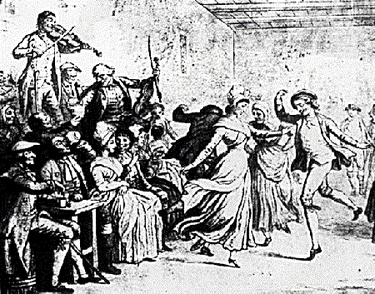
I love Celtic folk music. The rhythms are unique. The different combinations of pipes, whistles, guitars, fiddles, bouzouki, accordions or concertinas, bodhrans, and harps, to name a few, provide almost infinite variety, but with a recognizable style.
Of course, when most people talk about Celtic folk music, they really mean Irish music. And the music of Ireland is very fine. But Scottish music has its particular joys. Unfortunately, all that most people know about Scottish folk music is how much they hate the sound of bagpipes. There is so much more.
What follows is an introduction to Scottish folk music. This is by no means a complete survey: my intention is only to whet your appetite for exploration. I hope that you will check in from your journey from time to time, and let me know what you’ve found.
Celtic harps are often thought of as Irish, but the Scots have a rich harping tradition as well. Sileas is a harp duo, who blend an acoustic nylon stringed harp with an electrified steel stringed one, to create a unique sound. Sileas members Patsy Seddon and Mary Macmaster are also part of the group The Poozies.
Sileas: The Pipers
[purchase]
The Scots have a long tradition of dance music. But in 1746, a dispute with the English resulted in King George II banning the bagpipes and any other markers of Scottish clan traditions. The upshot of the matter is that the Scots could not use, or even be found with, their traditional instruments. But, they still wanted to dance. They needed a way to provide music for this purpose, and preserve their traditional dance tunes, while having the ability to disperse quickly and leave no incriminating traces. The solution was the development of a style known as Mouth Music. Traditional dance tunes were given words, and a highly rhythmic vocal style was developed that could be danced to. The lyrics were usually not very profound; the sounds of the syllables was more important than the content of the lyric. At the time, the music was strictly a capella, but nowadays, instruments are often added to the arrangement, since it is once again allowed.
Making quality tweed by hand involves an arduous and lengthy process know as “waulking”. Music helps this process go quicker. But since ones hands are busy all
during the process, instrumental music is out of the question. So the Scots developed an offshoot of Mouth Music, called Waulking Songs. Hug air a Bhonaid Mhor is an example of a waulking song, performed with traditional instruments.
Julie Fowlis: Hug air a Bhonaid Mhor
[purchase]
Seinn Oi is another matter. Here, the group Mouth Music has taken a traditional mouth music song, and given it a radical arrangement with electronics, creating a modern dance track. But one can still imagine what the song would have sounded like with no accompaniment at all.
Mouth Music: Seinn Oi
[purchase]






1 comments:
Darius, I just love this site and was wondering why I hadn't heard more from it lately. Come to find out, just now, that I'd meant to subscribe to it but never had. Just want you to know you're back in my radar screen.
Post a Comment